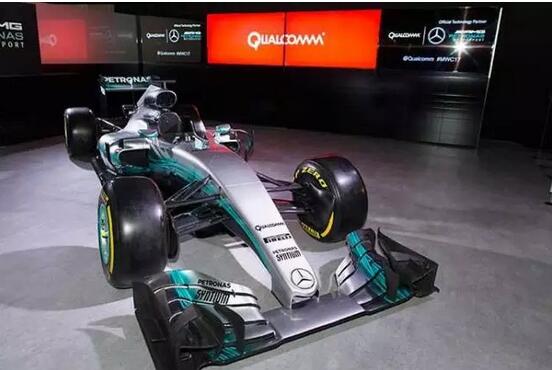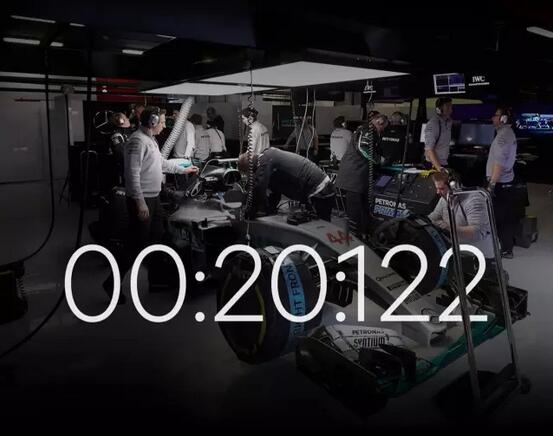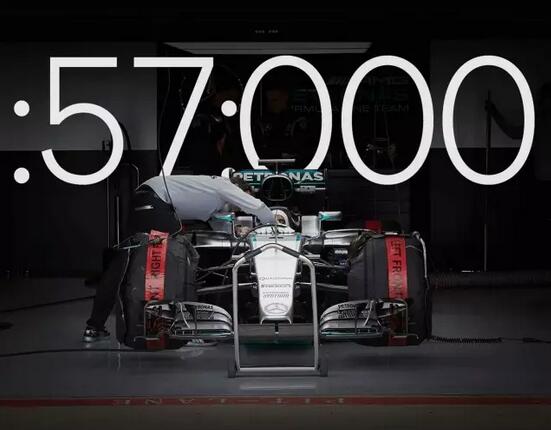In the F1 field, one thousandth of a second can determine the outcome. In the qualifying session on Saturday, Lewis Hamilton of Mercedes AMG Petronas won the first shot against Sevilla Vettel of the Ferrari team with a slight advantage of 0.186 seconds. Laid the advantage. Unsurprisingly, Hamilton continued to maintain his advantage in the race and led the car in the final and won the championship.
In fact, this is not the same as the team's power advantage in the car to win. In order to ensure the fairness of the game, the Commission has strict regulations on the height and width of the car and the position of the car that affects the aerodynamics of the car and the pressure of the tires. Even fuels are subject to testing by the F1 regulatory agency, and each vehicle must use the same brand of tires.
Since it is within the parameters stipulated by this sport, it is very difficult to win by greatly improving the performance of the car itself. So, is there any way to get the car to finish the race faster and get the trophy?

Because of the restrictions of the rules, so that all F1 cars are almost the same, then it is necessary to look at the strength of these team members. In the past it was very simple, and which team had the best drivers to win the game. But over time, the team that provided the car with protection was also the key to winning the game. Usually there are about 20 people at the pits who rely on accurate data to do highly professional work. Four of them were responsible for changing the tires, four were responsible for handling the tires, and the two were able to stabilize the middle of the car. The front wing crew was responsible for adjusting the angle of the car. The front and rear jacks were responsible for jacking up the car, one was holding a fire extinguisher, and one was responsible for starting the engine. Prevent the accident from stalling.
So how long does it take for the car to enter a pit stop in the F1 arena? The answer is: less than three seconds. To achieve such a fast pit stop speed, maximizing time is the key. So is there any way for the team to complete the maintenance of the car in three seconds and let the driver return to the track?

The Mercedes AMG Petronas team used an invisible but capable secret weapon – data. Start with data and improve fleet efficiency with information collected and processed in real time by Qualcomm's superior technology.
The data is of great value to the F1 competition. On an F1 car, about 200 sensors are deployed, generating 2 Gigabytes of data per hour. Team engineers can only quickly analyze the data and then quickly adjust the car or provide guidance to the driver. This is the challenge that Qualcomm and Mercedes AMG Petronas have to solve. The two teams are conducting field trials using high-speed wireless download testing of vehicle sensor information using 802.11ad Wi-Fi technology operating in the 60 GHz millimeter wave band.

During these field trials, racing engineers used 802.11ac operating at 5 GHz and multi-gigabit 802.11ad Wi-Fi technology operating in the 60 GHz millimeter wave band, directly from fleet racing cars parked at service stations or approaching repair stations. Data collection. Switching between the two Wi-Fi modes is automatic, a process that is orders of magnitude faster than a traditional car that stops in the garage and then downloads data by wire.
In the real arena, from the limited practice session, the team is constantly collecting data: the infrared camera that is mounted on the F1 car and points to the tire, can collect hundreds of thousands of measurements per second. Tire data is related to several pre-match preparations, including adjusting the suspension to improve the cornering performance of the car and modifying the front and rear wings to improve downforce. The team's engineers and staff must quickly process and analyze the temperature data from the infrared camera to make various fine-tunings that can have a significant impact on the game. The data collected by the camera directly affects the adjustments made during the game. Due to time constraints in the practice session, team members need to get the infrared camera data as soon as possible.
The team used the 5 GHz spectrum last year to download racing data via Wi-Fi, and this year introduced 802.11ad Wi-Fi technology to transmit information from vehicle sensors. The system uses the Qualcomm Snapdragon 820 processor with up to 128GB of flash memory to capture telemetry data from the car on the track. The Qualcomm QCA9500 chip will be used to support 802.11ad Wi-Fi.
With greater throughput through 60 GHz connections, racing engineers will get more intensive telemetry of data, enabling fleets to make critical decisions and get informed decisions. With 802.11ad Wi-Fi technology for faster data transfer, Mercedes AMG Petronas drivers Lewis Hamilton and Walter Botus will be able to spend more time on the track to tune car performance and reduce The time spent in the repair station.
Is this secret weapon very powerful? But there is a bigger secret here to tell you: these 802.11ac and 802.11ad networks used in F1 have already been applied in our daily lives! 802.11ac and 802.11ad networks have greater network bandwidth, ultra-fast transmission speeds, and stable connection efficiency, and now allow more users to experience high-speed connections from high-speed networks. Although the devices using 802.11ad networks are not yet popular, there are many related products for 802.11ac! If you choose routers, mobile phones and other mobile products, pay more attention to these often overlooked details, choose products with Qualcomm chips, you can get better connection performance, stability will have better protection.
Portable energy storage power Stastion
SHENZHEN CHONDEKUAI TECHNOLOGY CO.LTD , https://www.szsiheyi.com